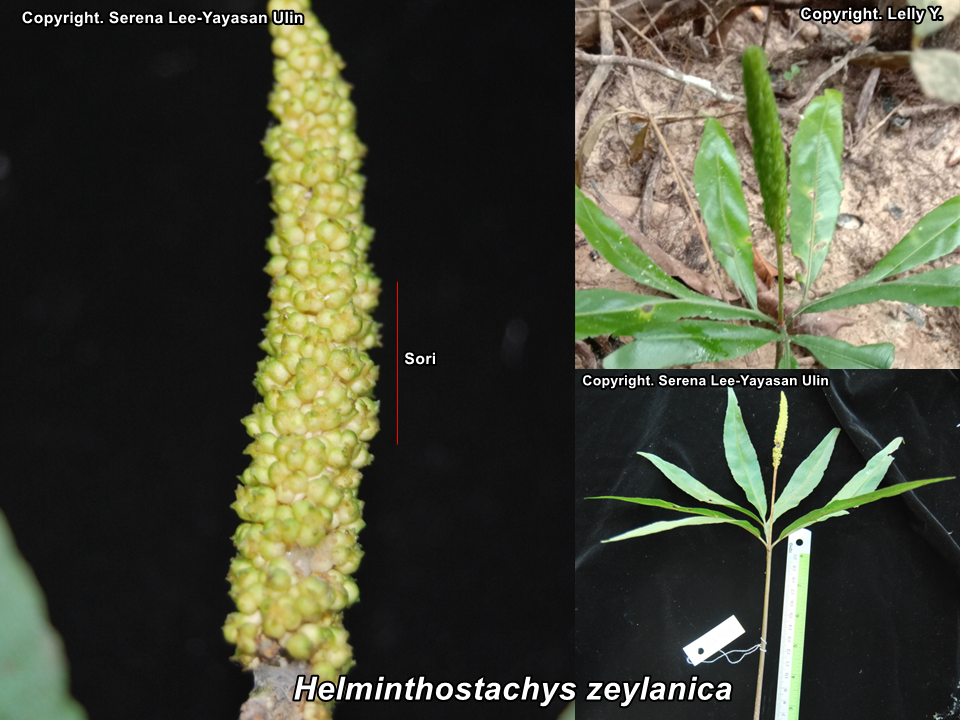Helminthostachys zeylanica
(L.) Hook.
Ophioglossaceae
Nama : Tunjuk langit.
Deskripsi : Terestrial. Rimpang pendek, tidak bercabang; ental holodimorfik, ental terdiri atas 3 helaian anak daun steril, bagian bawah, roset, majemuk bercuping dalam, tidak beraturan, pertulangan tersier menyirip, rapat, padat; 1 helaian daun fertil, terminal, tegak, bertangkai, memita atau menggalah; tangkai berwarna hitam keunguan muda. Sori pengumpul pada bagian menggalah, kehijauan sampai coklat-kekuningan.
Ekologi : Persebaran alami dari wilayah Asia Tropis dan Subtropis samai wilayah Pasifik bagian Barat, termasuk kawasan Malesia. Tumbuh pada daerah yang lembab sedikit ternaungi di daerah dataran rendah. Biasanya tumbuh di bawah kanopi, jarang pada lantai hutan yang tergenang. Pada hutan agroforestri dapat dijumpai di bawah tegakan tanaman karet.
Kegunaan : Daun secara etnobotani dimanfaatkan untuk sumber bahan makanan sayur-sayuran oleh masyarakat pedesaan di Malaysia. Akar atau rimpang secara etnomedisin dimanfaatkan sebagai tumbuhan berkhasiat obat pada beberapa macam penyakit. Referensi: Piggott, 1996; Vasco et al., 2013.

